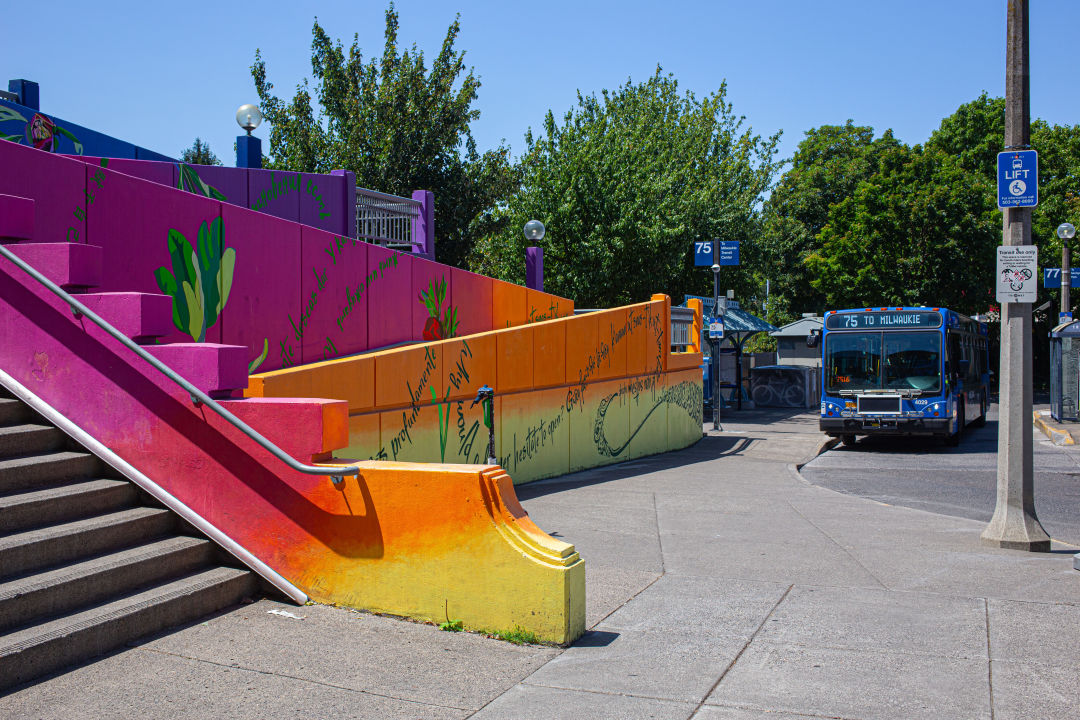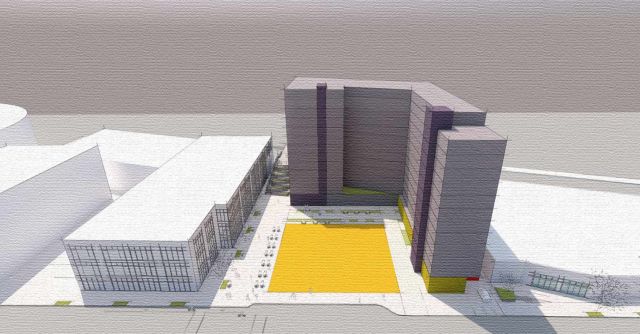After 35 Years, the Hollywood Transit Center Is Finally Getting a Redesign

Since 2018, a vibrant mural and poem have memorialized the victims of the 2017 MAX hate crime. The new Hollywood Hub currently in development seeks to honor that memorial while providing housing and transportation for area residents.
Image: Michael Novak
In an average year, more than 41,000 daily commuters use the 35-year-old Hollywood Transit Center, a light rail and bus station at NE Halsey Street and 42nd Avenue. Now, a new vision of the space promises to deliver not only a reimagined transit station, but a mixed-use, mixed-income housing development focused on equity, inclusion, and community.
The Hollywood Hub, as it’s called, is still in the early stages of what will be a years-long project. For the collaboration between TriMet, Bridge Housing, Hacienda Community Development Corporation, Central City Concern, and Holst Architecture, developers say they’re looking toward other communities around the country with transit-oriented development projects, such as the Bay Area’s Transbay Transit Center and MacArthur Station.

A conceptual rendering of the new Hollywood Hub.
Image: Courtesy TriMet
But the Hollywood station has a heavier past than most transit centers. In 2017, it was the site of the horrific 2017 MAX stabbings, which left two men dead and one severely injured after they intervened to support two Black teenagers being harassed by another rider.
Since 2018, a vibrant mural and poem have memorialized the victims of the hate crime. Guy Benn—program manager for transit-oriented development at TriMet—says the significance of the space guided the project’s focus. As the site develops over the next few years, a permanent memorial will be part and parcel of the Hollywood Hub’s vision.
“The idea of delivering an inclusive and encompassing community center is part of that memorial,” says Benn. “[The events of 2017,] that was racial intolerance. It was pure racism. So by delivering a development that promotes an inclusive, community-oriented environment, we think it supplements any memorial that we put onto the site.”




